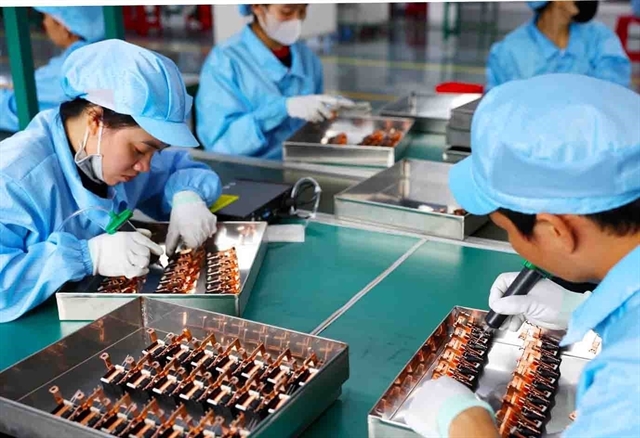The shift in foreign direct investment (FDI) flows into Việt Nam may become clearer after August 1 – the date when the US is set to officially announce its new tariff policy.

Sanyou Electric Appliances Company Limited, a China-invested company in Huế. Investors are watching the US's tariff policy to make investment decisions. — VNA/VNS Photo Phạm Hậu
HÀ NỘI — The shift in foreign direct investment (FDI) flows into Việt Nam may become clearer after August 1 – the date when the US is set to officially announce its new tariff policy.
As that deadline nears, investors are closely watching developments, with potential implications for global investment flows. This policy's possible impact on FDI into Việt Nam is becoming a focus of concern again.
Speaking at the annual Vietnam Industrial Connect 2025 held by IPA Vietnam last week, the company’s Chairman and CEO Nguyễn Đình Nam noted a decline in newly registered FDI in Việt Nam, which reflects a pause in new foreign investments.
Most capital is going toward existing projects. While the number of new projects is high, their average investment size is small, showing that Việt Nam is attracting more "sparrows" than "eagles", Nam said.
He attributed the cautious approach to lingering concerns over the US tariff policy and fluctuations in the “China +1” investment strategy.
“All investments are for the long term, so investors are waiting for clearer information before making decisions,” he said, perceiving that this may affect the FDI flows into Việt Nam.
This view was echoed by Bok Dug Gyou, head of Korea Desk at the Vietnam Trade Promotion Agency and Deputy Director of the Korea Trade-Investment Promotion Agency (KOTRA) office in Hà Nội. He noted that Korean investments into Việt Nam have slowed down partly due to the US tariff uncertainty.
Korean businesses are holding off until early August, when the final tariff decisions are expected, Bok said, adding that all countries are watching this closely.
According to a mid-year report by the Foreign Investment Agency under the Ministry of Finance, although investor confidence in Việt nam remains high, geopolitical risks and policy uncertainties including US tariff decisions continue to weigh on large-scale and long-term FDI disbursement.
Despite these challenges, Nam believes that if Việt Nam can negotiate effectively with the US, it could turn current pressure into an opportunity to attract high-quality investments.
“FDI growth may stay moderate for the next six months, but we expect a rebound in 2026, especially as the Government intensifies promotion efforts and new administrative units operate stably,” he said, pointing out a positive sign as both Việt Nam and the US are encouraging foreign investors to move their supply chains to the Southeast Asian nation.
FDI flows still accelerated during the first half of 2025. Total registered capital exceeded US$21.5 billion, up 32.6 per cent year-on-year, while disbursed capital reached $11.72 billion, a rise of 8.1 per cent
VinaCapital, in its July report, said Việt Nam will remain highly attractive to investors as long as US tariffs on Vietnamese goods do not exceed those imposed on other countries' by more than 10 per cent.
The Foreign Investment Agency emphasised that Việt Nam’s shift to a two-tier local government model not only serves socio-economic development but also strengthens investor confidence by signalling deeper administrative reforms and a more business-friendly environment.
To further boost FDI, Bok recommended continued reforms in the investment and business climate, technical workforce development, promotion of supporting industries, and selective investment attraction.
“Việt Nam should map out its value chains to identify weakness and address them,” Bok said, highlighting that foreign investors often face challenges in finding skilled labour and reliable supply chains.
Nam added that increasing locally made components, improving raw material control, and diversifying import sources would help Việt Nam mitigate the effects of external tariff policies, particularly those of the US.











